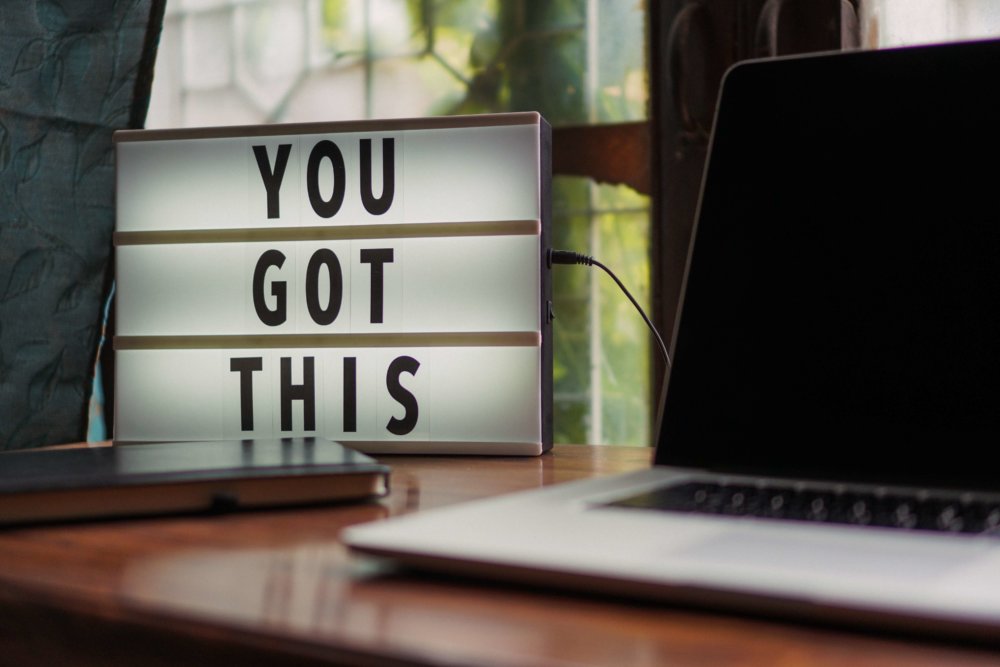November 21, 2019
5 surefire ways to get productive (and stay focused)

Being productive is easier said than done. So many of us sit down at our desks each morning, raring to go and start ticking things off our to-do lists (after we’ve had our first caffeine fix of the day, of course). However, sometimes things get in the way of our daily routine and it can be hard to get back into the groove of being productive when you’ve been interrupted from a task. As a matter of fact, it has actually been determined that it takes the average person 25 minutes to refocus on a task after being interrupted.
Whether it’s sorting through an overflowing email inbox, attending an unexpected meeting or having to put together a report last minute, it’s not unusual for it to get to 5:00 PM and realize that your to-do list remains untouched and that you haven’t been nearly as productive as you were hoping to be.
Even if you’re not faced with these distractions, sitting down and starting work on a big project with a fast-approaching deadline can be a daunting task – often so daunting that you struggle to get started in the first place. Cue the stress and feeling even more unproductive.
Though some degree of stress is important for motivating us to get things done, have too much and nothing will get done. According to the Yerkes-Dodson Law, elevated arousal (such as that caused by stress) can make you perform better – but only up to a certain point. This is because if you are too stressed or anxious, it can impair your ability to concentrate on the task at hand.
Test anxiety is a prime example of this because it can make it more difficult for you to remember the correct answers during an important exam, even if you revised for them sufficiently.
So, how do we solve this conundrum? Though ‘being productive’ is something we often have to force ourselves to be to get things done fast, productivity is (in actual fact) an art, and there are a few secrets to achieving it. Check out our top 5 ways to stay focused and productive below…
1. Determine when you’re most productive
Everyone has what is known as a ‘Power Hour’ – a certain point in the day when they’re at their most productive. If you know when this is, you can easily take advantage of it by scheduling your working day around it. For example, start arranging important meetings and planning to complete your most pressing tasks during this timeframe. For the times when you’re not feeling as bright-eyed and bushy-tailed, schedule in any repetitive, administrative tasks instead.
To easily identify your Power Hour, just think about when you do your best work. Do you get your best ideas after you’ve fully woken up around 10:00 AM? Do you struggle to refocus after lunch or suffer from that dreaded 3:00 PM slump? If you’re initially unsure, spend a few days recording when you complete certain tasks, how you felt doing them, and how productive you felt you were on a scale of one to ten. Your findings may surprise you.
2. Set deadlines (and stick to them)
We all know that setting deadlines is one of the most effective ways to remain focused, whether you’re working on individual tasks or a big project. This is because they give you something to visualize and work towards, reducing the risk of procrastination. If you give yourself a vague deadline for the task you keep putting off (such as ‘next week’), it will never get done. However, by adding accountability by telling your boss to expect it to be done by a specific date, you’ll actually prioritize the task.
Now, before you go plucking a random due date out of thin air, ensure there’s good reasoning behind the deadlines you choose and that they’re actually realistic. You’ve no doubt heard that goals should be SMART (Specific, Measurable, Attainable, Relevant and Time-Based) – but according to science, humans have a natural tendency to underestimate how long tasks take to complete. By tracking your work with task management software, you can make goals more attainable by seeing everything you need to get done and taking this into account when setting future deadlines.
3. Break big projects down into smaller tasks
One of the reasons we procrastinate before getting stuck into a big task or project is because they seem overwhelming. If there’s too much for us to focus on at once, we won’t know where to start – so we often wait longer than we should and end up causing ourselves unnecessary stress. Luckily, you can avoid getting to this stage by breaking the project down into individual tasks, setting a deadline for each of these and determining what needs to be done at every step.
Gantt Charts are particularly helpful for large projects because you can put every stage of your project into a clear timeline and set individual deadlines and reminders for each one. This lets you easily see what needs to be done when. With Ayoa’s Gantt Timeline View feature, you can give more context to each and every task by attaching files and adding comments, checklists and more. You can even set Milestones throughout the project’s duration to give yourself a sense of achievement every time you reach one.
4. Practice focussed daydreaming
Daydreaming and productivity don’t seem like two things that would go hand-in-hand, but they most certainly do. When we step away from a difficult task by going for a walk in the park, taking a bath or shower, or even leaving work and letting our minds wander when we’re sitting on the train home, we can get our best ideas. This is because when we’re relaxed, our brains release dopamine (the ‘feel-good’ hormone) which aids the creative thinking process.
But before you abandon your half-done report and put on your walking boots, you need to make sure that your daydreaming the right way to really reap the benefits. The clue is in the name; your thinking needs to be ‘focused’. This means you need to prepare before you head out the door. Do this by thinking about the problem first; arm yourself with knowledge by gathering as much information as you can, and you’ll find you get the most out of your daydreaming session as your subconscious mind mulls over this knowledge.
5. Switch off from (distracting) technology
How many times have you taken a 5-minute break from writing a document and before you know it, you’ve been scrolling through Twitter for half an hour and all you’ve got to show for it is the title at the top of the page? Your phone, emails and social media can bring many distractions when you’re already feeling unmotivated – and although cat videos might make you smile when you’re feeling stressed, they’re not going to help you if you’re struggling to stay focused.
First thing’s first; if you’re the type to get distracted by calls and new emails pinging into your inbox, then switch off your mobile phone and set an out of office for your emails, telling people you will get back to them later. Another tip is to give yourself a ten-minute break for every half an hour’s worth of work you do and reserve this for coffee runs and refreshing your mind. Just make sure you time these breaks so you don’t find yourself in the exact same situation you were hoping to avoid an hour later…
Often feel like you’re not being productive enough? Ayoa makes it easy to manage your workload in a personal Planner and Task Boards, so you can see everything you need to do at a glance with Due Dates, Reminders, and more. You can even track how much of each task has been completed with the Progress Indicator. Find out more about Ayoa for task management or sign up for for free today.

